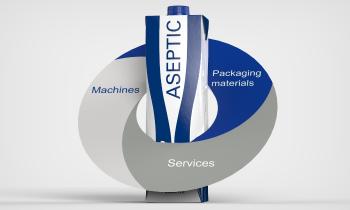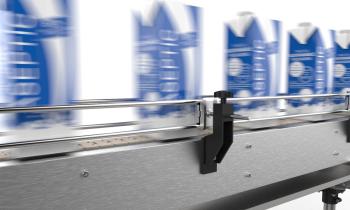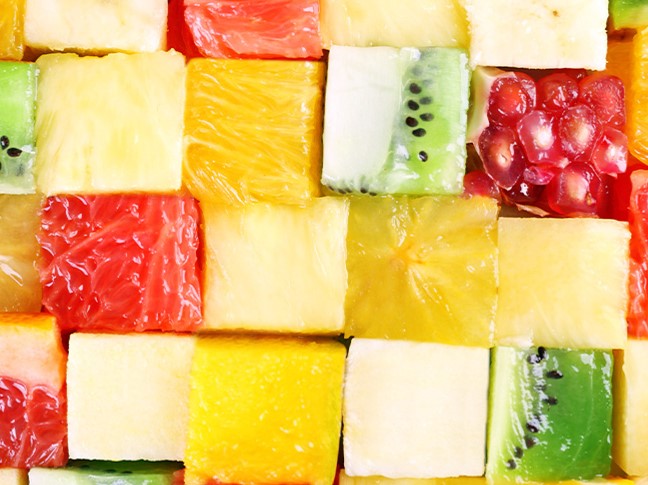What should effective packaging for fruit juices look like?
Contents of the article
1. GLOBAL CONSUMPTION OF FRUIT JUICES: UPS AND DOWNS
2. OPPORTUNITIES FOR FRUIT JUICE CONSUMPTION
3. FRUIT JUICES' PACKAGING TYPES AND FLAVOURS ACROSS DIFFERENT CONSUMPTION OCCASIONS
4. FRUIT JUICE PACKAGING MATERIALS
5. CARTON PACKAGING EVOLUTION
6. SOLUTIONS OFFERED BY IPI
7. PRESENT AND FUTURE OF JUICE PACKAGING
The world of fruit juice is rapidly changing: consumers demand new products in line with a hectic lifestyle, on-the-go consumption is transforming the packaging landscape - asking brand owners and manufacturers to provide functional packaging formats and advanced materials.
A careful study of juice consumption trends is fundamental to drive packaging innovation in the right direction, in order to successfully fulfill ever-changing consumer habits and needs.
Global consumption of fruit juices: ups and downs
Considering the growth of the population and the rise of the middle class, the consumption of fruit juices is growing in emerging countries and decreasing in the Western ones (Europe and North America).
According to a recent research, fruit juices sales have decreased in those countries that in the past recorded the highest consumptions, except for China.
Although being the market leader, the United States has been experiencing a drop of 2,6% in the consumption of fruit juices in the last three years, especially due to the campaigns aimed at limiting the use of sugar in food and beverages. On the other hand, the fruit juice consumption in China reached the 7,7% in the last three years, while Brazil is expected to become one of the top 10 countries for juice consumption globally. Latin America has experienced a massive boost in juice consumption, with a growth rate of approx. 12% per year, even though it was starting from quite a low point. Simultaneously, other hot points such as India, Indonesia and Malesia are growing.
Overall, considering the growth in developing countries and the drop in the developed ones, the fruit juices market is globally stable.
Opportunities for fruit juice consumption
How and when is fruit juice consumed? Some recent researches have highlighted diverse consumers’ habits.
Consumption routines have been divided according to specific parameters:
- Personal/private vs Social/convivial
- Indoor/in home vs Outdoor/on the go
Statistics show that consumers prefer to drink fruit juices during meals, especially when they are alone. They also consume them for sweet breaks, both at home and on the go.
As for the convivial consumption, fruit juices are mainly drunk at home for aperitifs, in get-together-with-friends’ occasions and at parties (the latter foresees juice consumption also outside the house).
Consumers’ habits vary according to geographies. Even though globally fruit juices are consumed mainly at breakfast (47%), there are interesting regional differences: fruit juices are consumed for breaks in Japan and Russia and during main meals in Brazil, while in China they are very common as a sport-drink.
As confirmed by a market research conducted globally, more than 90% of respondents worldwide confirmed that fruit juice consumption mostly happens at home, except for China, where the percentage drops to 83%, due to consolidated dietary habits.
With regard to outside consumption, the places where people drink fruit juices the most are schools and workplaces, even though their consumption is high in cafés/restaurants in China (25%), Brazil (25%) and Russia (24%).
The consumption frequency is quite high in all geographies: 42% of global respondents drink fruit juice once a day, or more. Brazil has the highest percentage of daily consumption (51% of the population), followed by the United States (45%) and the United Kingdom (42%). Japan is the last one (29%). About a third of the population that has been interviewed globally, drinks fruit juice once every two or three days. On average, consumers worldwide drink 1,2 glasses per day (240 ml); Brazilians are top consumers (1,7), followed by Germans (1,4) and Russians. (1,3)
Fruit juices are suitable both for adults and children: 77% of respondents worldwide asserted that their children drink juice (85% in the USA). On average, children drink a little bit more than adults – 1,3 glasses per day (260 ml) compared to the 1,2 glasses drank by adults. This number is even higher in the United States and Germany (1,6) and followed by Russia (0,7) and China (0,5).
Why are fruit juices given to children? Answers pointed out three main drivers: health (47%), taste (39%) and naturalness (25%).
Considering this fragmented landscape, brand owners and producers are asked to invest on packaging, which is indeed a key driver to stand out on shelf and generate sales.
Fruit juices’ packaging types and flavours across different consumption occasions
Through a careful analys of current trends shaping the fruit juice segment, companies could gain some interesting strategic advantages from the analysis of the most used packaging and flavours, in relation to the different moments of the day.
Breakfast
The type of packaging which is most used for breakfast is the 1 or 2 litres brick, ideal for a copious consumption, spread over the week. Flavours: mainly classic, such as orange, apple, pear and peach.
Snack
The 1 litre cardboard brick or the PET bottle are preferred for domestic consumption, while people favour the single dose brick for the outdoor consumption, especially for children. Flavours: the entire range offered by the market.
Sweet break
The best packaging in these circumstances are the maxi brick or the glass bottle. Flavours: mainly the most sought-after ones, also the very sweet ones, sometimes pulpy.
On the go
The most used packaging is the cardboard brick that contains up to 330 ml (less often the PET bottles). Flavours: mainly the classic ones, pulpy and energizing.
Mealtimes
The most used packaging in these situations is the family-sized brick with cap (especially the 1 litre one). Flavours: mainly ACE, orange and pineapple.
Get together
The most common format is the maxi brick (1 or 2 litres) or the PET bottle. Flavours: the entire offer available on the market, especially exotic flavours, often mixed. Sometimes the beverage is complementary to other drinks.
Aperitif
The 1 litre brick or the PET bottle are the most used formats. Flavours: the entire range, especially the new ones, mixed with other beverages.
Parties
The optimal packaging in these occasions are the family-sized cardboard brick with cap (especially when children are the target audience) or the PET bottle. Flavours: the wide range offered by the market, from the classic flavours (for children) to the mixes, including the exotic ones.
Fruit juice packaging materials
Let's now analyse and compare the most used materials for fruit juices packaging, also considering the market evolution.
Glass
It has been and still is a premium material for fruit juices packaging, boasting specific strengths related to hygiene, freshness and transparency. An additional element on its behalf, is the environmental sustainability, since glass is completely recyclable.
However, glass requires greater expenses, both when purchasing the raw material and for the transport, since this material is heavier and more voluminous than others. In addition, glass packaging is very fragile and easily breakable.
PET
PET bottles are a good solution because of the practicality that allows them to stand out for manageability and robustness.
Nevertheless, there are some disadvantages that are slowing down their global use: first of all, PET is a deformable material and it provides the product a low protection from the UV rays; moreover, it is a scarcely sustainable material.
Aseptic Carton
This material has many advantages. First of all, the carton packaging is unbreakable, easy to palletise during the transportation and convenient to be placed on shelves. It’s a strong material that offers the highest protection and an excellent long-term shelf-life at room temperature. In addition, it is light and economically convenient compared to other materials, such as glass. From a marketing perspective, carton packaging has an external part which is wider than in other types of packaging: this surface can be devoted to the brand and to the information related to the product. The advantages are also related to sustainability since carton (which constitutes the 80% of the packaging) is eco-friendly and it implies limited footprint since it is easily foldable.
Contrary, the non-transparency of the material and the absence of a diversification among the packaging shapes, can have represented a limit for certain brands. However,
innovation in carton packaging has contributed to successfully overcome some of these limits.
Carton packaging evolution
The companies that work in the packaging industry designed new formats, following the market’s trends and the final consumer’s needs. These new packaging formats have the following features:
- Easiness: greater ease of opening and pouring thanks to caps available starting from single-portion sized cartons
- Ergonomics: better grip than that of the classic rectangular packs
Today carton packaging still satisfies most of consumers’ needs, both household and on-the-go consumption. Consumers are seeking for increased experience on carton packaging: differentiation, appeal and ergonomics become a “must”.
Carton, also in view of its evolution in the packaging field, is intended to conquer further market shares.
Solutions offered by IPI

The evolution and the great variety of consumers’ needs are creating business opportunities for carton packaging in different shapes and sizes.
IPI is among the world’s leading suppliers of solutions for the aseptic carton packaging of milk and juices. In addition to classic shapes, it has been able to introduce innovative packaging with a wide range of products suitable for different needs and consumption occasions.
Premium shapes
Next to the traditional shapes (rectangular bricks), IPI offers brand owners and manufacturers the chance to differentiate their products from competitors, through premium formats such as SuperSlim and Caliz.
SuperSlim by IPI brings great efficiency of the packaging palletisation. On top of this, the visible side on the shelf is 25% wider if compared to traditional shapes: this is an extremely important aspect to both stand out and catch consumers’ attention and increase the brand’ value.
Caliz is one of IPI’s premium packaging models, characterized by unique and exclusive features. Its round profile is designed to make the packaging stand out from the competitors’ solutions available on shelves, in order to maximise impulse purchases.
Besides the design, which offers excellent opportunities for brand positioning, Caliz satisfies the consumer’s practical necessities too, since its shape is easily graspable, as much as a bottle.
Present and future of juice packaging
As shown by a recent Nielsen's research, IPI's premium shapes are at the forefront of a huge aesthetic and ergonomic evolution of the carton packaging, in line with the current requests for juice packaging differentiation.
Younger individuals in particular, claim to be ready to pay an extra 5-10% versus the current cost of the finished product, in order to enjoy a better consumption experience, delivered by advanced packaging formats.
IPI’s experience and innovative capacities allow it to be able to analyse the client’s needs and suggest the aseptic carton packaging – classic or premium – most suitable for the growth of his/her business.
For further information:
 ASEPTIC SOLUTIONS PROVIDER
ASEPTIC SOLUTIONS PROVIDER
 FILLING EQUIPMENT
FILLING EQUIPMENT
